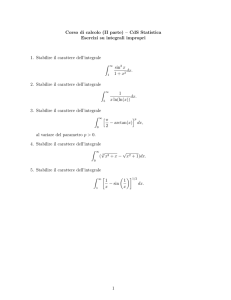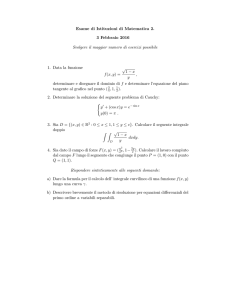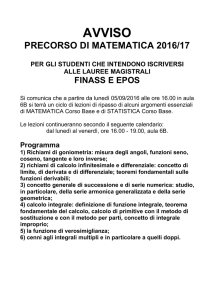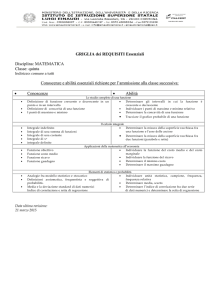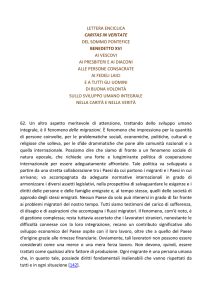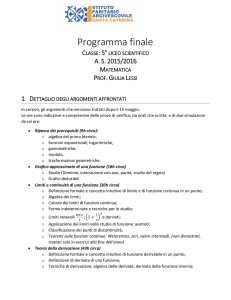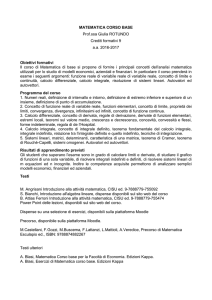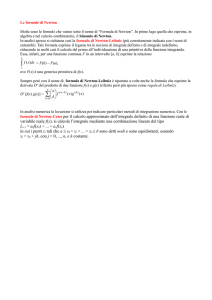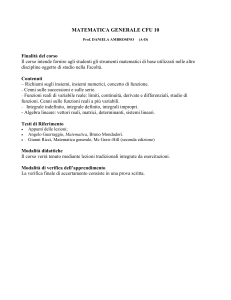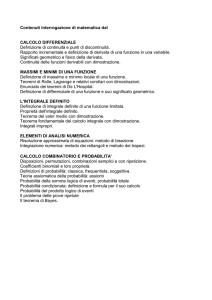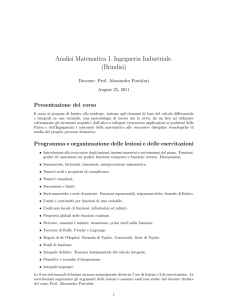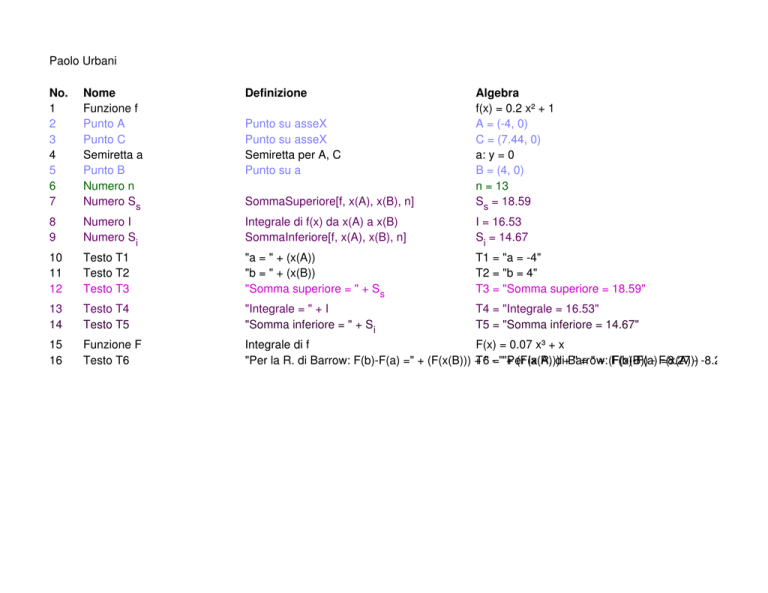
Paolo Urbani
No.
1
2
3
4
5
6
7
Nome
Funzione f
Punto A
Punto C
Semiretta a
Punto B
Numero n
Numero Ss
Definizione
SommaSuperiore[f, x(A), x(B), n]
Algebra
f(x) = 0.2 x² + 1
A = (-4, 0)
C = (7.44, 0)
a: y = 0
B = (4, 0)
n = 13
Ss = 18.59
8
9
Numero I
Numero Si
Integrale di f(x) da x(A) a x(B)
SommaInferiore[f, x(A), x(B), n]
I = 16.53
Si = 14.67
10
11
12
Testo T1
Testo T2
Testo T3
"a = " + (x(A))
"b = " + (x(B))
"Somma superiore = " + Ss
T1 = "a = -4"
T2 = "b = 4"
T3 = "Somma superiore = 18.59"
13
14
Testo T4
Testo T5
"Integrale = " + I
"Somma inferiore = " + S i
T4 = "Integrale = 16.53"
T5 = "Somma inferiore = 14.67"
15
16
Funzione F
Testo T6
Integrale di f
F(x) = 0.07 x³ + x
"Per la R. di Barrow: F(b)-F(a) =" + (F(x(B))) +T6" -=""Per
+ (F(x(A)))
la R. di+Barrow:
" = " + (F(x(B))
F(b)-F(a)
- F(x(A)))
=8.27 - -8.27 = 16.53
Punto su asseX
Punto su asseX
Semiretta per A, C
Punto su a

